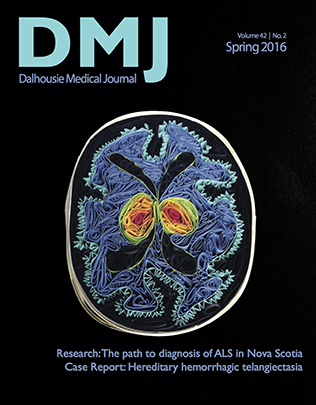The effectiveness of magnetic resonance imaging-guided focused ultrasound thalamotomy in the treatment of patients with essential tremor: a literature review
DOI:
https://doi.org/10.15273/dmj.Vol42No2.6676Abstract
Purpose: Essential tremor (ET) may eventually become resistant to drugs, and invasive surgeries may have side ef- fects. Magnetic Resonance Imaging-guided focused ultrasound (MRIgFUS) thalamotomy is being tested as an al- ternative treatment. This literature review sought to explore the effectiveness of the use of transcranial MRIgFUS thalamotomy on patients with ET.
Methods: To identify potentially relevant original English articles, PubMed and Google Scholar were searched until January 1, 2016. Title and abstracts and then full texts, were screened for inclusion criteria. Articles discussing the effectiveness of the transcranial MRIgFUS thalamotomy for the treatment of ET in humans were included. Methods, results and discussion sections of selected articles were synthesized.
Results: Four articles were included in the synthesis. Overall, 37 patients with ET were treated with transcranial MRIgFUS thalamotomy. Studies found that scores for hand tremor, disability, and quality of life significantly im- proved. Treatment had some temporary side effects such as sensory, cerebellar, motor, speech abnormalities; how- ever, paresthesias persisted in some patients. Monitoring potential serious side effects such as intracerebral hemor- rhage and neurologic impairment was recommended since these were previously found to be associated with other types of surgical thalamotomy procedures.
Conclusions: Although most of the studies were uncontrolled and potential side effects need to be considered, results of transcranial MRIgFUS thalamotomy for ET in humans suggest that this treatment has potential to improve patients‘ quality of life. Randomized trials with larger sample sizes are warranted, and one of these is underway.
Downloads
Published
How to Cite
Issue
Section
License
Authors who publish with this journal agree to the following terms:
- Authors retain copyright and grant the journal right of first publication with the work simultaneously licensed under a Creative Commons Attribution License that allows others to share the work with an acknowledgement of the work's authorship and initial publication in this journal.
- Authors are able to enter into separate, additional contractual arrangements for the non-exclusive distribution of the journal's published version of the work (e.g., post it to an institutional repository or publish it in a book), with an acknowledgement of its initial publication in this journal.
- Authors are permitted and encouraged to post their work online (e.g., in institutional repositories or on their website) prior to and during the submission process, as it can lead to productive exchanges, as well as earlier and greater citation of published work (See The Effect of Open Access).


